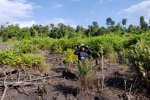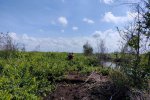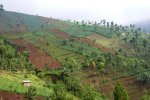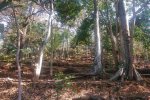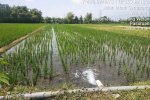
Project
From understanding to actions using a hydrological model and role-playing games
My PhD project is expected to better understand the forest-people-water nexus to promote collaboration among stakeholders for achieving hydrological restoration in two contrasting landscapes in Indonesia, using GenRiver model and serious games to facilitate the learning, decision making and negotiation process among stakeholders.
Hydrological restoration as an effort in returning the hydrological function requires that four knowledge-to-action chains are converging: understanding, commitment, operationalization and innovation. The success of restoration largely depends on policy implementation that is defined based on the collaboration, leadership and knowledge of all stakeholders together: local stakeholders, public stakeholders/policy makers and reseachers). However, at this moment, these stakeholders have their own knowledge system, way of learning, typologies and explanatory models, so they are moving in their own spheres and have sometimes conflicting interests because they refer to their own knowledge and goals.
Therefore, tools are needed that can contribute to mutual understanding by showing environmental issues faced by each stakeholders and can turn shared commitment into more tangible action where each stakeholder acts according to his/her abilities and responsibilities within the framework of hydrological restoration, as long as rules, incentives and motivation align (operationalization and innovation). To meet restoration needs, the tools should be inclusive and participatory, and should facilitate three functions: strengthening knowledge, sharing knowledge and facilitating the collective decision-making. This research is expected to close the gaps among stakeholders by bridging knowledge to action experienced by stakeholders.
Theory of Change framework will be used to transform understanding to actions by following these three sub-objectives:
1 To identify the current and future hydrological situation in two contrasting landscapes in Indonesia;
2 To develop serious games that can be used as a communication tool to explain the hydrological situation to the public and local stakeholders; and
3 To evaluate the use of serious games to contextualize understanding to action in achieving hydrological restoration.
This research will use two contrasting landscapes that have different social-eco-hydrological characteristics to contextualize progress along the knowledge-to-action chains: (a) Rejoso watershed in East Java and (b) Ketapang peatlands in West Kalimantan.
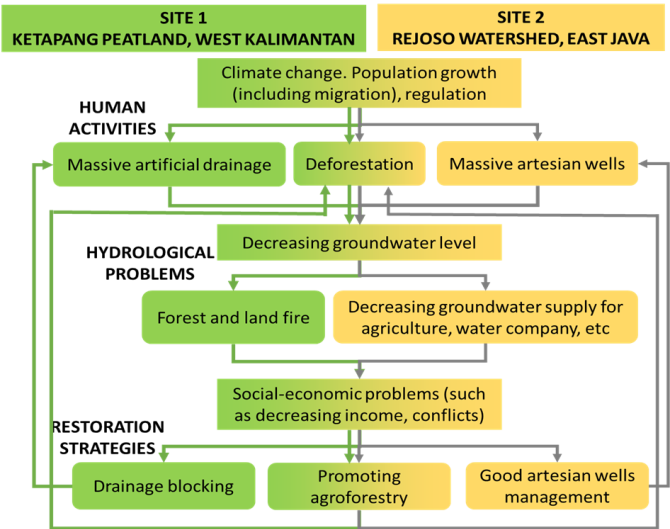
Restoration
There are four main methods used in this study:
1 Rapid Hydrological Appraisal (RHA) as a tool that provides a comprehensive assessment on hydrological function, by integrating three different knowledges: Local Ecological Knowledge (LEK), Public Ecological Knowledge (PEK) and Modellers/Researcher Ecological Knowledge (MEK)
2 The Generic River Flow (GenRiver) model as a hydrological model that will be used to understand the below-ground hydrology, for both historical and future situations in both sites.
3 Serious games as a communication tool that provides fun as part of the game and at the same time it become a diagnostic and decision making or negotiation tools.
4 Q-methodology as a systematic approach that combines qualitative and quantitative analysis to assess changes in knowledge of the serious game participants.
Framework
This project is part of the SESAM Project, the Rejoso Kita Project and the Working Landscapes Programme.

